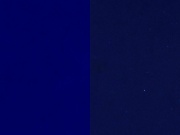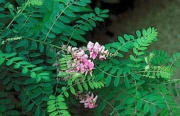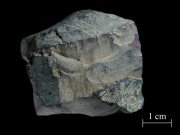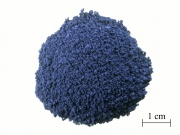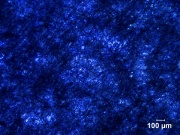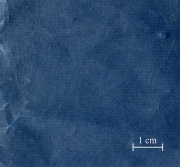Difference between revisions of "Indigo"
(username removed) |
(username removed) |
||
| Line 10: | Line 10: | ||
== Description == | == Description == | ||
| − | + | ||
[[File:indigo tinctoria t.jpg|thumb|]] | [[File:indigo tinctoria t.jpg|thumb|]] | ||
| Line 20: | Line 20: | ||
== Other Properties == | == Other Properties == | ||
| − | Soluble in nitrobenzene, phenol, chloroform, glacial acetic acid. Insoluble in water, ethanol, acetone, ethyl acetate, pinene. Absorption max = 599 (in xylene). ISO R105 Lightfastness Classification = 3-4 Microscopically, indigo has fine, translucent dark blue, rounded particles that are weakly birefringent and appear red under Chelsea filter. | + | Soluble in nitrobenzene, phenol, chloroform, glacial acetic acid. Insoluble in water, ethanol, acetone, ethyl acetate, pinene. |
| + | Absorption max = 599 (in xylene). | ||
| + | ISO R105 Lightfastness Classification = 3-4 | ||
| + | Microscopically, indigo has fine, translucent dark blue, rounded particles that are weakly birefringent and appear red under Chelsea filter. | ||
[[File:indigo_powder.jpg|thumb|Photomacrograph of indigo powder from the Botanical Museum, Harvard University. | [[File:indigo_powder.jpg|thumb|Photomacrograph of indigo powder from the Botanical Museum, Harvard University. | ||
| Line 46: | Line 49: | ||
== Hazards and Safety == | == Hazards and Safety == | ||
| − | Discolored by reducing agents and bleaches. Fisher Scientific: [https://fscimage.fishersci.com/msds/62055.htm MSDS] | + | Discolored by reducing agents and bleaches. |
| + | Fisher Scientific: [https://fscimage.fishersci.com/msds/62055.htm MSDS] | ||
[[File:dyed indigo.jpg|thumb|Photomacrograph showing paper dyed with indigo. Sample provided by the Asian Conservation Laboratory, MFA. | [[File:dyed indigo.jpg|thumb|Photomacrograph showing paper dyed with indigo. Sample provided by the Asian Conservation Laboratory, MFA. | ||
Revision as of 11:39, 27 April 2013
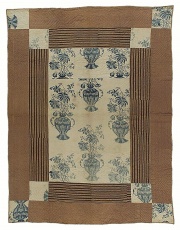
Description
Synonyms and Related Terms
2,2'-biindolinyliden-3,3'-dion; Indigofera tinctoria; Natural Blue 1; CI 75780 (natural); Vat Blue 1; CI 73000 (synthetic); Pigment Blue 66; indigotin; indicum (Pliny); indigo (Esp. Fr., Dan., Ned., Port., Sven.); Indigo (Deut.); anil (Esp.); Indiko (Gr.); indaco (It.); aneel; anile; ai (Jap.); rams (Tibetan); blue ynde; blue inde; anneil; India blue; intense blue; rock indigo; stone blue; indigo carmine; intense blue; indico; indicoe; indego; nil
Other Properties
Soluble in nitrobenzene, phenol, chloroform, glacial acetic acid. Insoluble in water, ethanol, acetone, ethyl acetate, pinene. Absorption max = 599 (in xylene). ISO R105 Lightfastness Classification = 3-4 Microscopically, indigo has fine, translucent dark blue, rounded particles that are weakly birefringent and appear red under Chelsea filter.
| Composition | C16H10N2O2 |
|---|---|
| CAS | 482-89-3 |
| Melting Point | 390-392 |
| Molecular Weight | mol. wt. = 262.26 |
| Refractive Index | >1.662 |
Hazards and Safety
Discolored by reducing agents and bleaches. Fisher Scientific: MSDS
Additional Information
H.Schweppe, "Indigo and Woad", Artists Pigments, Volume 3, E. West FitzHugh (ed.), Oxford University Press: Oxford, 1997. Pigments Through the Ages: Indigo
